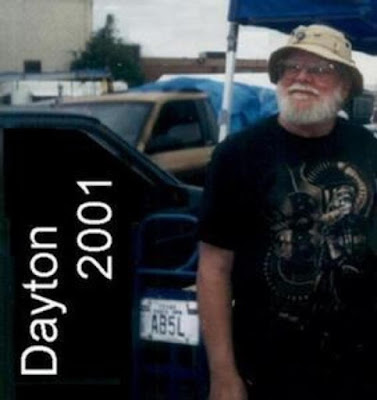Podcasting since 2005! Listen to Latest SolderSmoke
Saturday, July 3, 2021
M0NTV's Latest Breadbox Rig -- The Radio Gods Have Spoken (TRGHS)!
Thursday, July 1, 2021
Summer Reading for Homebrewers: Frank Jones and the FMLA by Michael Hopkins AB5L (SK)
I read these stories when they were first coming out and I really liked them. Here are all the FMLA episodes. Don't try to read them all in one sitting. Spread them out. Savor them. Think about the message that Frank was sending us.
All of the FMLA episodes: https://tomfhome.files.wordpress.com/2019/12/frank_and_the_fmla.pdf
--------------------------------------
Related articles, books and links:
Frank's obit: https://www.pressdemocrat.com/article/news/frank-jones/
Frank's book "5 Meter Telephony": https://w5jgv.com/downloads/5-Meter%20Radiotelephony%20by%20Frank%20Jones.pdf
Frank's 1937 Antenna Handbook: http://rfcec.com/RFCEC/Section-3%20-%20Fundamentals%20of%20RF%20Communication-Electronics/23%20-%20RADIO%20ENGINEERING%20DATA/1937%20-%20Jones%20Antenna%20Handbook%20(By%20Frank%20C.%20Jones).pdf
About the author, Michael Hopkins AB5L: https://www.rantechnology.com/index.cfm?key=view_resource&TransKey=615604E8-9DAA-40A3-9E48-4160806D893D&CategoryID=8E884CE4-9CED-4957-872B-5EBDB058D540&Small=1
The World's Largest Heathkit Collection (Video)
Wednesday, June 30, 2021
10 Pole Crystal Filter Passband as Seen in Antuino and NanoVNA
Tuesday, June 29, 2021
Jack NG2E's Pebble Crusher
Check out NG2E's Pebble Crusher homebrew transmitter. Doug DeMaw would be enormously pleased.
Jack will no-doubt have this 250 mW rig on the some peak along the Shenandoah Valley, handing out QSOs to SOTA fans.
Jack's blog page has a really nice video on this project:
https://jackhaefner.blogspot.com/2021/06/pebble-crusher-40m-xmtr.html
Saturday, June 26, 2021
SolderSmoke Podcast #231 -- Travel, SST, Mythbusting, Filters, TIAS, NanoVNAs, DC RX in SPRAT, Drake A Line, Spillsbury, STICKERS! Mailbag
Thursday, June 24, 2021
Radio Netherlands -- Bonaire Relay Station
Friday, June 18, 2021
Jean Shepherd on CW, and Strange Propagation -- QRP!
Thursday, June 17, 2021
The Stubborn Myth about USB and LSB
It has been repeated so often and for so long that many of us have come to believe it. I myself believed it for a while. Like many myths, it has a ring of truth to it. And it is a simple, convenient explanation for a complex question:
Why do ham single sideband operators use LSB below 10 MHz, but USB above 10 MHz?
Here is the standard (but WRONG) answer:
In the early days of SSB, hams discovered that with a 9 MHz SSB generator and a VFO running around 5.2 MHz, they could easily reach both 75 meters and 20 meters (True). And because of sideband inversion, a 9 MHz LSB signal would emerge from the mixer as an LSB signal (True), while the 20 meter signal would emerge -- because of sideband inversion -- as a USB signal (FALSE!) That sideband inversion for the 20 meter signal explains, they claim, the LSB/USB convention we use to this day.
Why this explanation is wrong:
There is a very simple rule to determine if sideband inversion is taking place: If you are subtracting the signal with the modulation FROM the signal without the modulation (the LO or VFO) you will have sideband inversion. If not, you will NOT have sideband inversion.
So, you just have to ask yourself: For either 20 or 75 are we SUBTRACTNG the Modulated signal (9 MHz) from the unmodulated signal (5.2 MHz)?
For 75 meters we have: 9 MHz - 5.2 MHz = 3.8 MHz NO. We are not subtracting the modulated signal from the unmodulated signal. There will NOT be sideband inversion.
For 20 meters we have 9 MHz + 5.2 MHz = 14.2 MHz. NO. No subtraction here. No sideband inversion.
So it is just arithmetically impossible for there to be the kind of happy, easy, and convenient USB/LSB situation described so persistently by the myth.
---------------------------------
We discussed this several times on the podcast and in the blog:
https://soldersmoke.blogspot.com/2015/05/sideband-inversion.html
https://soldersmoke.blogspot.com/2012/05/usblsb-urban-legend-debunked.html
This myth shows up all over the place:
We see the myth here:
http://n4trb.com/AmateurRadio/Why%20The%20Sideband%20Convention%20-%20formatted.pdf
Here the web site owner warns that this is "highly controversial." Really? Arithmetic?
The myth is very old. Here is a clip from a 1966 issue of "73" magazine:
https://worldradiohistory.com/
Finally, to my disappointment, I found the myth being circulated by the ARRL, in the 2002 ARRL Handbook page 12.3:
































